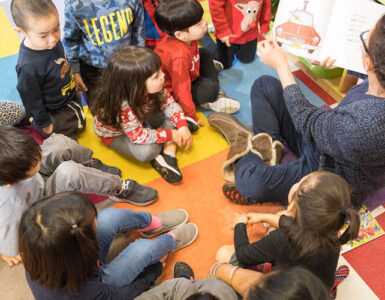At the beginning of every month, local artists, performers and creatives congregate in downtown Phoenix for First Friday, a celebration of the city’s art community. But one exhibit at August’s event celebrated art created in a different environment – within the walls of Arizona’s correctional facilities.
The show, called (Ink)arcerated, was hosted by Arizona State University’s Center for Correctional Solutions as part of its Art from the Inside initiative. Through a partnership with the Arizona Department of Corrections, the university provides art supplies to incarcerated individuals and then sells the created artwork to the public, with all proceeds benefiting charity.
“They get to do [art] on the inside, but often… it stays in prison,” said Caitlin Matekel, a PhD student at ASU’s School of Criminology and Criminal Justice. “And so, what does that look like when it gets to go out?”
This year’s show – the second one since the program began in 2017 – featured over 250 art pieces created by men in Arizona prisons. One of those artists is Robert Supplee, who said he was grateful he had the opportunity to paint while he was incarcerated.
“Art, for me, is just something that I was focused on, that brought me through the hard times,” he said. “It connected me to everything that I thought I was separate from.”
Supplee, a longtime Arizona resident who has worked as a tattoo artist for seventeen years, said his experiences painting while imprisoned helped him better understand why people are motivated to create art.
“It took me so long to be enlightened by it,” he said, “but now I can sit back and look at art and understand the drive and the passion behind artists.”
According to Matekel, a group of ten ASU freshmen developed the idea for (Ink)arcerated in 2017 through project-based learning. The goal, Matekel said, was to find ways to educate the community about prison programming while also providing incarcerated individuals with new opportunities.
“Because their art is going out there, and the community gets to see it, it’s this indirect way of interacting with the communities they’re going to be returning to,” she said.
ASU criminology student Gen McKenzie was one of those freshman students who conceptualized the initial (Ink)arcerated art show, and who also helped organize this year’s event. McKenzie said that after the 2017 exhibit, inmates were eager to learn when the next one would be.
“It’s just kind of a way for them, while they’re incarcerated, to spend their time positively thinking about something that is creative,” she said.
From drawings and paintings to handmade jewelry boxes and decorated guitars, a wide range of art was on display at this year’s show. Supplee had two paintings on display that he created while incarcerated; one of them, titled New Beginnings, integrates Supplee’s favorite colors and a design his mother taught him to draw when he was a child.
“I plan on doing a series of these to be in a gallery,” he said.
Dr. Kevin Wright, Director of ASU’s Center for Correctional Solutions, says that he thinks providing these types of creative opportunities for inmates may be a factor in building positive decision-making habits.
“If we have an opportunity for them to make these good choices, have autonomy, get better at stuff that matters to them, contribute to positive lives for others, then that’s good,” he said.
The proceeds from this year’s (Ink)arcerated show went to Free Arts, a nonprofit that provides artistic opportunities to children experiencing trauma. Matekel said her team chose Free Arts after hearing from inmates that they wanted their art’s proceeds to benefit children. Over 120 pieces of art were sold during the show, Matekel said, totaling around five thousand dollars in donations.
“It’s almost this perfect connection between the two groups,” she said. “What better way than to sell art, and then give it right back to therapeutic art?”
Both Matekel and McKenzie said they hope to see the art show expand in the future to include women and reach even more artists. The Center for Correctional Solutions is already planning on creating an online gallery to sell pieces virtually.
Supplee said he also hopes to see the program expand.
“It was a huge catalyst for me,” he said. “So how could it not be in other people’s lives?”
















Add comment